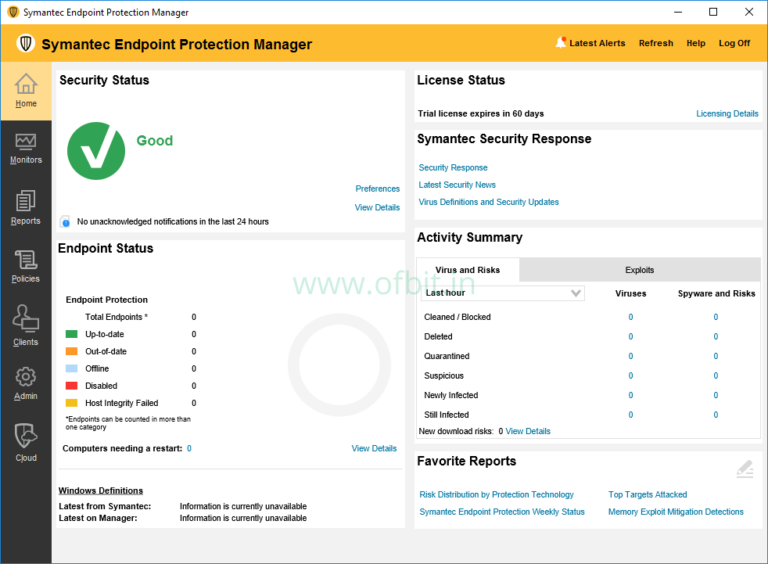


Sem5.log file in the %installationdirectory%\db start again the ‘Symantec Endpoint Protection manager’ service.Ĥ.Launch Symantec Endpoint Protection Manager Console open Windows Services, then stop ‘Symantec Endpoint Protection manager’Ĭ:\Program Files\Symantec\Symantec Endpoint Protection Manager\Toolsģ. You can use ‘resetpass.bat’ file, it will reset the password for the Symantec Endpoint Protection Manager admin account.ġ. After it comes up you should be able to open this log file.Īnother beautiful hack for locating that lost password is:ġ) Go to ODBC, enter the user name and password…etc.Ģ) In the database server name, enter the server name as …etc.ģ) Goto %programfiles%\symantec\symantec endpoint protection manager\phpĤ) Change the attributes for php.ini to remove the read only.ĥ) Open the php.ini file and search for “off”, make this to be “on”, for all the errorlog and give the path for error_log = syslog to say c:\dump\password.txt but not the root of any drive like c:\password.txt as this will not generate a log, I don’t know why, might be a bug within php.Ħ) Login to SEPM and you should get, “unable to communicate with reporting component”ħ) The log file generated will have your username as DBA and the good working password set in originally.Ĩ) Don’t forget to change php.ini attribute back to read only once you are finished editing. So disable all the Symantec Endpoint Security related services and reboot the server. Not an easy task because one of the Symantec services does not give you the ability to stop it. In order to open this log file, you will need to:ġ) Stop all services using it. If you forgot the original password, you can find it stored in the sem5.log file in the %installationdirectory%\db.


 0 kommentar(er)
0 kommentar(er)
